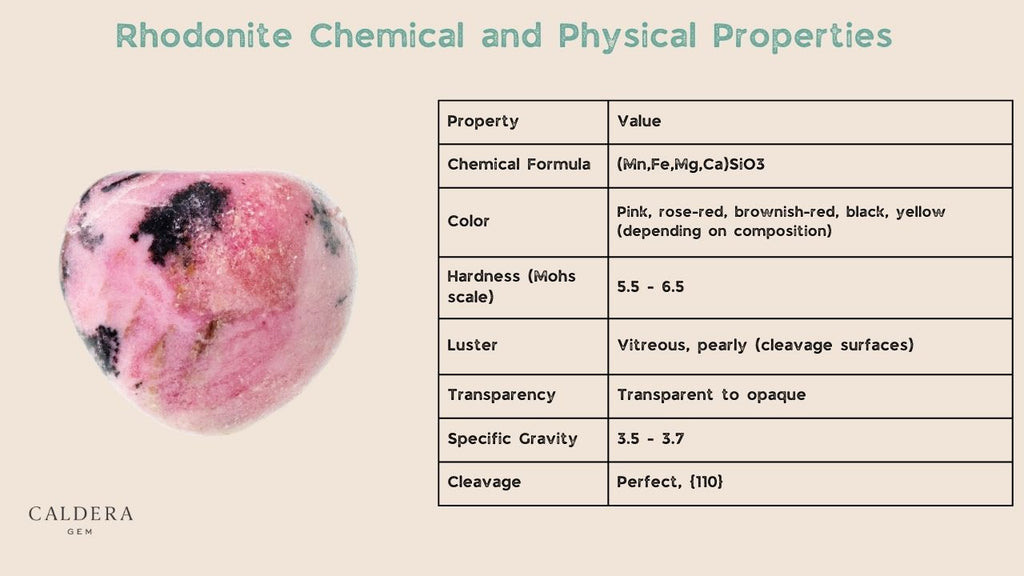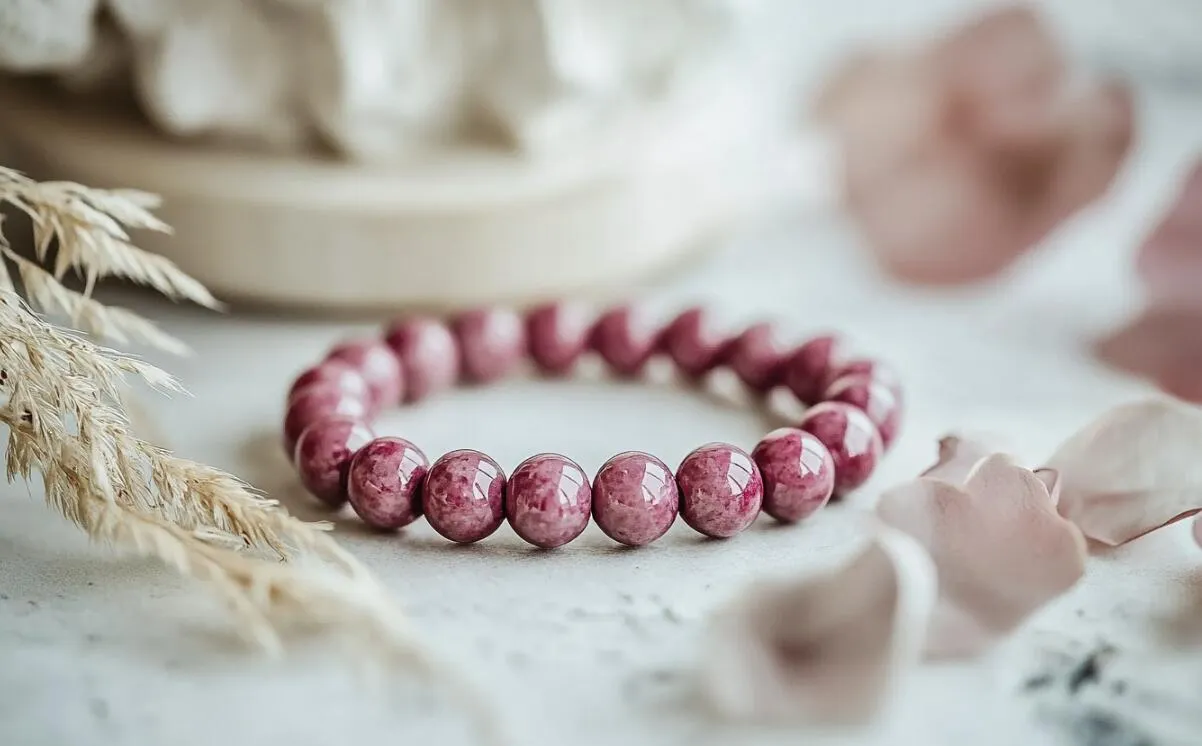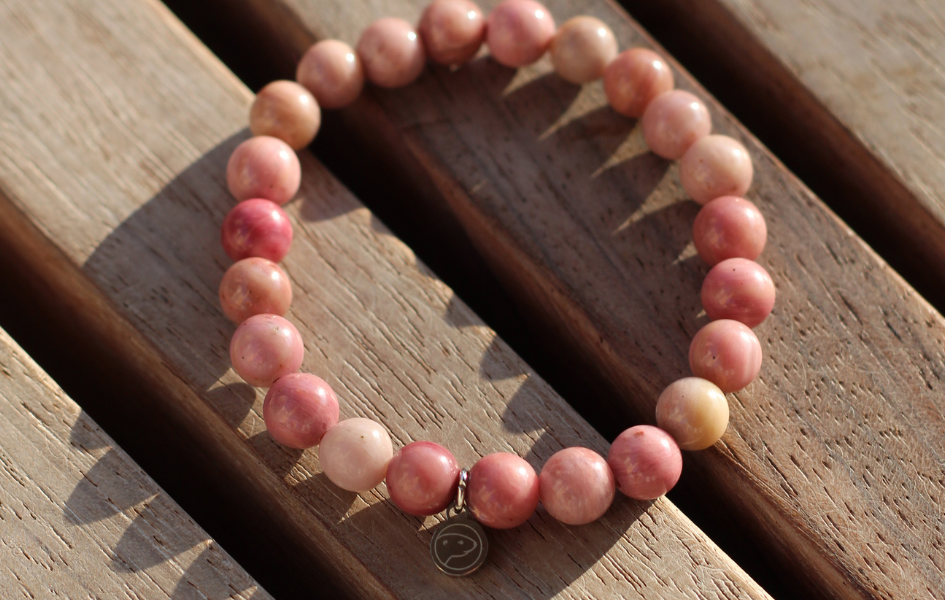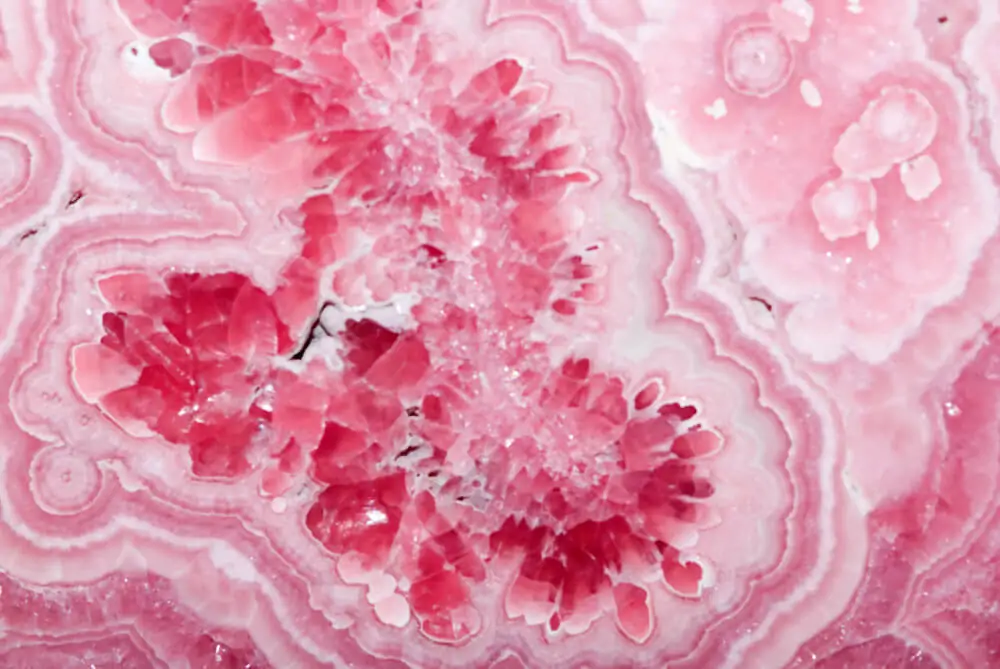Personalize your gemstone collection with the unique hardness of rhodonite, a captivating mineral known for its stunning appearance and intriguing properties. This article provides essential insights into rhodonite’s characteristics, meaning, and benefits to enhance your appreciation and informed choices in jewelry.
Understanding the Characteristics of Rhodonite
Rhodonite is a fascinating mineral admired for its unique properties and aesthetic appeal. Delving deeper into the essence of this gemstone helps enthusiasts and collectors appreciate its value and significance in both jewelry and metaphysical practices. In this section, we will explore various aspects of rhodonite, which include its mineral properties, uses in jewelry, and its distinction from similar gemstones.
Comprehensive Overview of Rhodonite Mineral Properties
Rhodonite is primarily composed of manganese silicate, which contributes to its distinct qualities. The hardness of rhodonite on the Mohs scale ranges between 5.5 to 6.5, making it a relatively manageable gemstone for various applications. This moderate durability allows it to be used in a range of jewelry designs while still being delicate enough to require special care.
In addition to its impressive composition, rhodonite often features striking patterns that can vary from pink to reddish hues, often complemented by black streaks of manganese oxide. Such variety not only enriches its visual appeal but also enhances its uniqueness as a gemstone. Rhodonite’s beautiful patterns and vibrant colors make it a favorite among gemstone enthusiasts.

Comparing Rhodonite to Rhodochrosite
While rhodonite and its counterpart, rhodochrosite, share some similar attributes, there are key distinctions that set them apart. Rhodonite vs rhodochrosite mainly involves differences in their chemical composition and color characteristics. Rhodonite primarily contains manganese, whereas rhodochrosite is a carbonate mineral predominantly made up of manganese carbonate.
Moreover, the color ranges of rhodonite, often leaning toward pink and red, differ from rhodochrosite’s more pastel-toned, pinkish hues. Understanding these differences allows buyers to select the right gemstone for their preferences, whether they seek the robust flair of rhodonite or the softer tones of rhodochrosite.
Care and Maintenance Considerations for Rhodonite Jewelry
Proper care is essential to maintaining the beauty and longevity of rhodonite jewelry. This section addresses the best practices for cleaning and storing rhodonite pieces, ensuring they remain stunning for years to come.
Recommended Care Tips for Rhodonite Gemstones
To preserve the brilliance of rhodonite jewelry, avoid exposing it to harsh chemicals or abrasive materials. It is advisable to clean rhodonite pieces with a soft cloth and mild soap mixed with water. This gentle approach prevents scratching and keeps the surface free from dirt and grime.
Additionally, storing rhodonite pieces separately from other gemstones in soft pouches or lined jewelry boxes can help prevent scratches and damage. Being mindful of your environment, such as avoiding direct sunlight and extreme temperature fluctuations, also plays a significant role in preserving the stone’s beauty.
Understanding the Impact of Rhodonite's Hardness on Care
The hardness of rhodonite necessitates a balanced approach to care. Given its moderate position on the hardness scale, special attention should be paid when wearing it alongside harder gemstones. By being cautious during activities where the jewelry may experience impact, you can maintain its integrity.
When considering routine check-ups with a jeweler, thorough inspections can help ensure the settings and structures of rhodonite pieces remain secure. Investing time in maintenance not only prolongs the stone’s life but also enhances overall satisfaction for jewelry collectors.

Incorporating Rhodonite into Jewelry and Its Symbolism
Rhodonite holds a special place in jewelry making, appreciated for its beauty and the meanings attributed to it. In this section, we explore the various ways rhodonite can be utilized in jewelry and the significance it carries.
Popular Uses of Rhodonite in Jewelry Design
Rhodonite is often set in various types of jewelry, including rings, necklaces, and bracelets. Its unique coloration and patterns make it an attractive centerpiece for statement pieces. Artisan jewelers frequently incorporate rhodonite into modern and vintage designs, enhancing their visual appeal.
The versatility of rhodonite allows it to be paired with complementary metals and materials, such as gold or silver settings, further enriching its aesthetic. As a gemstone, it serves not just as an accessory but also as a conversation starter, showcasing its natural beauty and artistic value.
Symbolism and Healing Properties of Rhodonite
In metaphysical circles, rhodonite is celebrated for its healing properties, believed to promote emotional balance and reconciliation. These attributes make it a sought-after stone for those seeking inner peace or assistance in overcoming emotional challenges. Many wear it as a talisman during times of turmoil, believing in its power to bring clarity and stability.

Additionally, rhodonite’s symbolism extends to its representation of love and compassion. As a result, it is often given as a meaningful gift, symbolizing affection and support. Recognizing these layers of meaning enriches one’s appreciation for rhodonite, both as a striking gemstone and a source of emotional support.
Essential Insights for Purchasing Rhodonite Jewelry
Understanding the nuances of rhodonite can empower potential buyers to make informed decisions. This section provides valuable insights into what to look for when purchasing rhodonite and guidance on selecting quality pieces.

Key Factors to Consider When Buying Rhodonite Jewelry
When buying rhodonite jewelry, it’s crucial to evaluate the rhodonite hardness along with its overall quality, including craftsmanship and design. A well-crafted piece with secure settings can assure longevity, enabling the buyer to enjoy it for years.
Potential buyers should also examine the gem’s color richness and clarity. While rhodonite can have variations in patterns and shades, ensuring the piece aligns with personal style while carrying meaningful symbolism will enhance satisfaction in the purchase.
Where to Find Quality Rhodonite Options
Seek out reputable jewelers who specialize in gemstones, as they are more likely to provide authentic rhodonite pieces and detailed insights into the rhodonite composition. Online marketplaces may offer an expansive range of options, but ensure you read reviews and request clear images to authenticate quality.
Engaging with knowledgeable sales staff and asking questions about the sourcing and care of rhodonite jewelry can also guide your selection process. Taking the time to research and understand what you are purchasing guarantees a more rewarding investment in this beautiful gemstone.
Appreciate the hardness of rhodonite as an essential quality that enhances its appeal in various applications. By gaining insights into its properties and uses, enthusiasts can better appreciate this captivating gemstone’s beauty and craftsmanship, enriching their jewelry collection.
